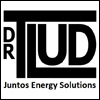Stovers,
Stover Marc-Andre in Senegal asked:
*********
If secondary holes have an impact on the height of the flames, then do
smaller holes augments or diminishes the height of the flames?
***************
There is not one simple answer to your question about secondary air
(SA). Flame height depends on getting the oxygen MIXED into the
combustible gases. Time, temperature and turbulance are the 3 T’s of
combustion. (assuming the gases are combustible and that there is
sufficient oxygen.)
And much depends on the “draft.” Draft is either
1. natural (ND) pulling / suction / lower-pressure than the
surrrounding ambient air caused by hot gases in a riser or chimney, or
2. forced air (FA) pushing / higher pressure of fans or blowers.
If there is sufficient draft, then smaller holes or smaller gap for SA
can increase the speed of entry, thereby increasing the turbulance.
But if the draft is not sufficient (or is not controlled, resulting is
simply bringing in more promary air (PA), resulting in more gases being
created and therefore needing more SA ), then making the SA entry
smaller will make combustion more difficult to accomplish in a
vertically short distance.
Tall flames occur when the hot, combustible gases only have contact with
the oxygen (air) on the edges of the column of rising gases.
This explains (at least in part) why Kirk Harris has such clean
combustion in his WonderWerk stoves.
What to do in your Senegal efforts? Experiment again and again. Learn
about the impact of a riser. ND-TLUD stoves that have no riser (and
there are many of them) are asking for trouble. Just 10 cm (4 inches)
can make a massive difference. Then try 20 cm or 30 cm (one foot) or a
meter (~yard). Be sure that you can control (almost close off) the the
PA supply.
With sufficient draft, you can actually hear the turbulance.
***
Selective messages such as this one and the next one are now being
placed at my website www.drtlud.com
Next I will send a message about FA TLUDs and relative costs.
Paul
Doc / Dr TLUD / Prof. Paul S. Anderson, PhD
Email: psanders@ilstu.edu
Skype: paultlud Phone: +1-309-452-7072
Website: www.drtlud.com
